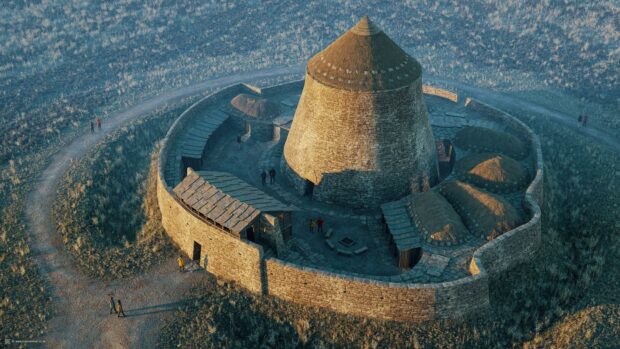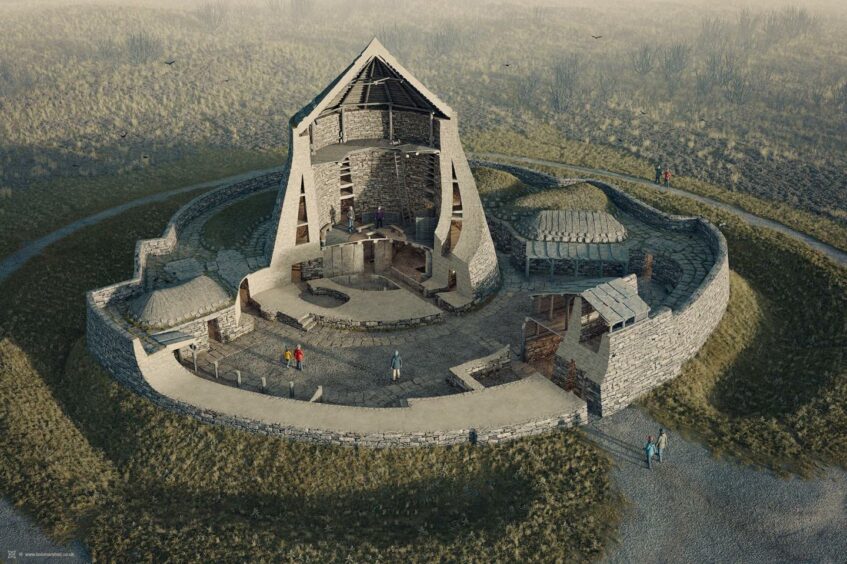Grand designs have been released for a historic Broch in Caithness; the first of its kind for more than 2,000 years.
Archaeological charity Caithness Broch Project (CBP) have released new digital images of what the completed structure will look like.
Brochs are tall, double-walled, drystone towers found only in Scotland.
The ancient monuments were once common features in the Iron Age landscape across the Highlands and Islands, with Caithness laying claim to more brochs than anywhere else.
Officials hope to acquire the land ahead of commencing construction works next year, involving a wide range of skilled heritage craftspeople.
It’s hoped their recreation will become a thriving visitor attraction for the region of Caithness, which has recently been projected to lose over 20% of its population over the next 20 years.
‘The design isn’t a carbon copy’
Co-founder and director Iain Maclean says the new designs reflect the wider architectural repertoire of brochs across Scotland.
He said: “We wanted to capture a variety of features found in Broch construction from all over Scotland, so the design isn’t a carbon copy of any individual Broch but instead is a kind of chimera of elements chosen for a number of reasons, ranging from structural robustness, health and safety, or purely because they were interesting features.”
The visuals, created by digital reconstruction artist Bob Marshall, showcase the charity’s desire to re-create a broch standing over 60 feet high.
The design will incorporate a number of flourishes such as triangular doorway lintels, cells built into the broch itself, and a series of outbuildings such as wags, wheelhouses and blockhouses.
Funding for the project is being acquired from a variety of sources.
The charity are also collecting donations via their website to support their conservation work.
CBP director Kenneth McElroy says he hopes the build to become an “icon” for the north of Scotland.
He added: “This project will be a hugely important one for the county. Not only do we want this to become a sustainable and successful contribution to the economy of Caithness, but it could become an icon for the county too.”

